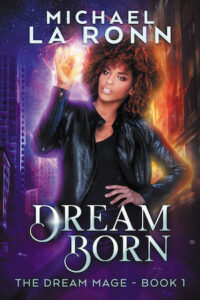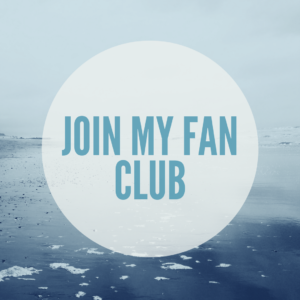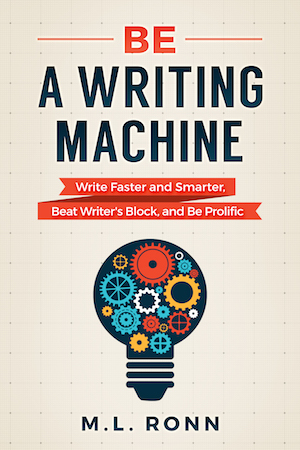SHOW NOTES
- How and why people watching is my secret to writing vivid, memorable scenes
- My seven-step process for capturing any scene or person on paper with stunning accuracy
Sound/Music Credits for this week's episode
Intro/Outro Music: “Kick. Push” by Ryan Little.
Sound Effects/Miscellaneous Credits:
Sound effects courtesy of Freesound.org.
TRANSCRIPT
[Bird sounds]
Have you ever been people-watching?
There’s a park near my house that I like to people watch in. Let me tell you about a typical day here: the sky is filled with the most amazing cirrostratus clouds.
And all amongst this idyllic scene are people, each one with a unique story.
I have found people watching to be an endless stream of character and story ideas.
And I have a tried and true process for every session to capture everything I see accurately. It works like magic.
In this
***
Hello, and welcome to episode 18 of the podcast.
In this week’s
A lot of people people-watch, but I’ve found that the most effective sessions I’ve had were the ones where I did it intentionally.
This sounds counterintuitive. After
That’s not what I’m talking about.
I almost never people watch on purpose.
But when I find myself in a situation where the people are interesting, I have seven questions that I ask that help me capture the setting, the people, and the mood with stunning accuracy.
These seven questions are magical, and it’s amazing how well they work.
Seven Questions for Better People Watching.
It goes without saying that whenever I find myself in a great situation I pull out my phone. I use the Evernote app to capture my thoughts. A benefit of Evernote is that it lets you take notes, photos, and sound.
Anyway, the first question is what do I see?
I write down what I can see. I start with the setting. I describe in a sentence or two what it looks like. Then, if I’m watching a particular person, I describe what they’re wearing, what they’re carrying, or what they’re sitting or standing on. Colors are also important and something that may not be easy to remember later.
The second question I ask is what do I smell? If I’m in a restaurant, that’s easy. I describe the food in the air. If I’m at a park, it’s usually grass or flowers. If I’m elsewhere, then it’s usually more difficult and I have to really pay attention to what my nose is telling me.
Unless there is a really strong smell, this is something I forget later when I’m trying to recreate the scene, so I try my best. Also, if I’m watching someone I’m probably too far away to smell anything on them like cologne or perfume. Sometimes if I can’t smell anything
The third question I ask is what do I hear? What’s the surrounding ambiance like? If people are
The fourth question I ask is what can I taste? If there’s no food involved, I look for anything else that might help me capture this.
The fifth question I ask is what can I touch? I’m usually not in a position to touch someone and that would get me put in jail.
Describing textures is one of the best ways to develop as a writer. Most people can describe sight and smells, but a pro weaves in texture. Textures also have the benefit of doing double duty when you’re using them. If I said that a woman had an alligator purse, you would both see it and imagine the texture. See what I mean?
And you’ve probably caught on that I’m simply describing the scene in the five senses.
But there are two more questions that take my observations to the next level.
What’s the Story Here?
The sixth question I ask is a simple but fun one: what’s the story here?
For people, it’s “what’s this guy’s story?” “What’s this woman’s story?”
At this point, it’s all imagination. I use what I can see to make some simple assumptions about the person.
If it’s a man and a woman sitting across from each other, based on their body language I can tell if they’re on a date,
I start with an assumption, and ask “what’s the story?” As I describe it, I then ask, “what if?” What if this couple sitting at the table next to me in the French restaurant are on a date? What if the guy is from Canada and the girl is from New Mexico? What kind of culture clashes would they have?
What’s his story? What was his mom like? Where does he like to travel? What really pisses him off? What does he do for a living?
I write and write and write.
And then I ask the last, most important question: What does the person think of this place?
Something I learned from Dean Wesley Smith, a writer who I look up, is that it’s not just enough to describe a setting in the five senses. Your character also has to have an opinion about the setting.
If you’re in a hot swamp and you hate swamps, well, that’s going to color what you see, smell, hear, taste and touch, right?
But if you’re in a restaurant with someone of the opposite sex and you’re having the time of your life, you’re going to have a much more favorable opinion of the setting.
I like to write a few sentences about the person I’m watching and what they think of the place they’re in. This way, everything they see and do is filtered through that lens. It’s a simple but very effective tool to help me get inside a character’s head.
So that’s how I people watch. To recap, I ask, what do I see, what do I hear, what do I smell, what do I taste, and what can I touch? For bonus points, I then ask “What’s the story here?”, what if questions, and “What does the person think about the setting?”
This is the process I use to capture everyday scenes. You’d be surprised how much I consult my sketchbook when it’s time to write my novels.
And, another secret that I’ll give away—when I’m writing a scene for a novel, I like to take a minute or two and imagine the scene in my mind—I imagine the people, sights, tastes, smells, textures, and sounds, character opinions BEFORE I put the character into the scene.
If you want to see my people-watching process in action, check out a couple of my previous sketchbook episodes: Love in the Food Court, Episode 2, and My Run-In with a Weird Pyramid Scheme, Episode 16.
Next week, I’ll be posting another people-watching session I had that was both fun and vivid.
QUOTE OF THE WEEK
“Develop a passion for learning. If you do, you will never cease to grow.” Anthony J. D’Angelo
Show's over, but it doesn't have to stop here.
If you liked this episode, you and me are probably kindred spirits.





